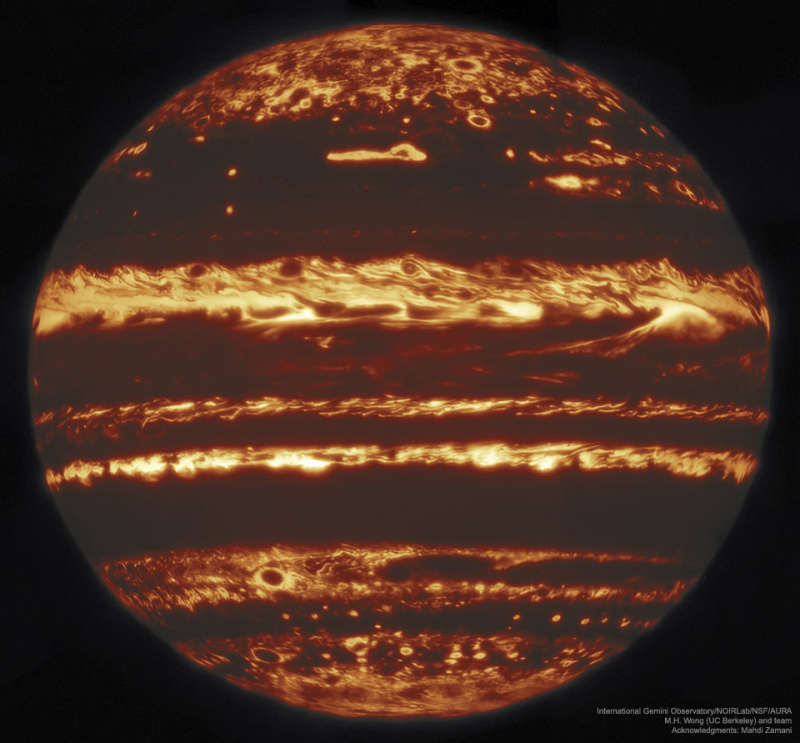
|
Credit & Copyright: International Gemini Observatory,
NOIRLab,
NSF,
AURA;
M. H. Wong
(UC Berkeley) &
Team;
Acknowledgment: Mahdi Zamani; Text: Alex R. Howe (NASA/USRA, Reader's History of SciFi Podcast)
Explanation:
In infrared,
Jupiter lights up the night.
Recently, astronomers at the
Gemini North Observatory in
Hawaii,
USA,
created some of the best
infrared photos
of Jupiter ever taken from Earth┴s surface,
pictured.
Gemini was able to produce such a clear image using a technique called
lucky imaging,
by taking many images and combining only the clearest ones that, by chance, were
taken when
Earth's atmosphere=/a was the
most calm.
Jupiter┴s
jack-o┴-lantern-like
appearance is caused by the planet┴s different
layers of clouds.
Infrared light
can pass through clouds better than
visible light,
allowing us to see deeper, hotter layers of
Jupiter's atmosphere,
while the thickest clouds appear dark.
These pictures, together with ones from the
Hubble Space
Telescope
and the
Juno spacecraft,
can tell us a lot about weather patterns on Jupiter, like where its
massive,
planet-sized storms form.
Acknowledgment: Mahdi Zamani; Text: Alex R. Howe (NASA/USRA, Reader's History of SciFi Podcast)
Notable APOD Submissions:
Flower Moon 2020
|
January February March April May June July August September October November December |
| ||||||||||||||||||||||||||||||||||||||||||||||||
NASA Web Site Statements, Warnings, and Disclaimers
NASA Official: Jay Norris. Specific rights apply.
A service of: LHEA at NASA / GSFC
& Michigan Tech. U.
Based on Astronomy Picture
Of the Day
Publications with keywords: Jupiter
Publications with words: Jupiter
See also:
